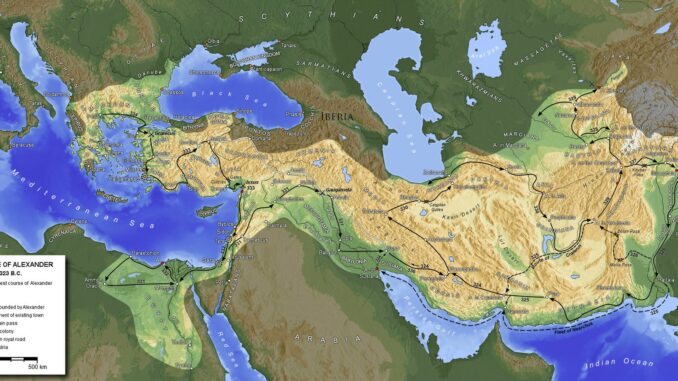
The Battle of the Granicus River in May 334 BC was fought in Northwestern Asia Minor (modern-day Turkey), near the site of Troy. After crossing the Hellespont, Alexander advanced up the road to the capital of the Satrapy of Phrygia. The various satraps of the Persian empire gathered their forces at the town of Zelea and offered battle on the banks of the Granicus River. Alexander ultimately fought many of his battles on a river bank. By doing so, he was able to minimize the advantage the Persians had in numbers. In addition, the deadly Persian chariots were useless on a cramped, muddy river bank.
Arrian, Diodorus, and Plutarch all mention the battle, with Arrian providing the most detail. The Persians placed their cavalry in front of their infantry, and drew up on the right (east) bank of the river. The Macedonian line was arrayed with the heavy Phalanxes in the middle, Macedonian cavalry led by Alexander on the right, and allied Thessalian cavalry led by Parmenion on the left. The Persians expected the main assault to come from Alexander’s position and moved units from their center to that flank.
Alexander’s second-in-command, Parmenion, suggested crossing the river upstream and attacking at dawn the next day, but Alexander attacked immediately. He ordered a small group of cavalry and light infantry to attack from the Macedonian right to draw the Persians off the bank and into the river. Seeing that he had broken the Persian line, Alexander led his horse companions in oblique order further to the right in order to outflank the Persians and buy time for his infantry to cross the river. Several high-ranking Persian nobles were killed by Alexander himself or his bodyguards, although Alexander was stunned by an axe-blow from a Persian nobleman named Spithridates. Before the noble could deal a death-blow, however, he was himself killed by Cleitus the Black. The Macedonian cavalry opened a hole in the Persian line as the Macedonian infantry advanced, forcing the enemy back and eventually breaking their center. The Persian cavalry turned and fled the battlefield, and the Greek mercenary infantry they held in reserve were encircled by the Macedonians and slaughtered; only around two-thousand of which survived, and were sent back to Macedonia for labor.
Source: Wikipedia
